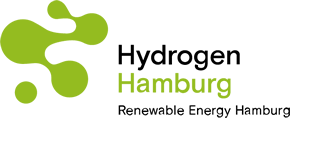Details
New approaches for hydrogen: stimulus from basic research
Current research projects at DESY reveal new potential for innovative hydrogen production and storage

Hydrogen is considered a central element of the energy transition: in future, it will power eco-friendly aircraft, ships and lorries and enable the production of green steel and cement. However, this light gas is only as green as its production, of course. Scientists around the world are conducting research into how to efficiently produce, store, distribute and use hydrogen. Including those at Deutsches Elektronen-Synchrotron (DESY) in Hamburg-Bahrenfeld. Two current examples from this basic research reveal new approaches for the production and storage of hydrogen which could represent promising solutions if successfully transferred to applications.
Nano-chocolates: a new approach to hydrogen storage
Up until now, storing hydrogen has been complex and energy-intensive. The gas is either stored in pressurised tanks at up to 700 bar or in liquid form, in which case it has to be cooled down to minus 253 degrees Celsius. As an alternative, a research team led by Andreas Stierle, Leading Scientist at DESY, has used palladium. This precious metal can absorb hydrogen like a sponge. However, until now, getting the hydrogen out of the material again has posed a problem. Researchers are therefore adopting a new approach and using palladium particles that are only about one nanometre across. A nanometre is one millionth of a millimetre. To ensure that these particles are sufficiently sturdy, they are stabilised by a core made of the rare precious metal iridium and attached to a graphene support, an extremely thin layer of carbon. The palladium particles can be anchored to this at intervals of just two and a half nanometres. The result is a regular, periodic structure.
X-rays revealed processes at nano level: DESY’s X-ray source PETRA III was used to observe what happens when the palladium particles come into contact with hydrogen: essentially, the hydrogen sticks to their surfaces, with hardly any of it penetrating the inside. Figuratively speaking, these nanoparticles resemble a chocolate: an iridium nut at the centre, enveloped in a layer of palladium rather than marzipan, and chocolate-coated on the outside by the hydrogen. All it takes to recover the stored hydrogen is to add a small amount of heat; the hydrogen is rapidly released from the surface of the particles, because the gas molecules don’t have to push their way out from inside. More information about this research is published in the scientific journal, ‘ACS Nano’, by the American Chemical Society (ACS).
Thinner than a hair: solar cell for producing hydrogen
A project by leading scientist Simone Techert appears to be equally visionary. The idea is to develop a solar cell that directly produces hydrogen – just like the leaf of a plant that converts light energy directly into chemical energy. This means green electricity would no longer have to be generated by a solar farm and transported via cables to an electrolyser, but would be generated directly in situ, inside the electrolyser so to speak. Techert’s working group has already built the first prototypes – tiny cells, thinner than a human hair. Like a sandwich, they consist of several layers: an upper layer acts as a solar cell, collecting light and converting it into electricity. Unlike most photovoltaic modules on domestic roofs, it is not made of silicon, but of light-sensitive plastic molecules. The wafer-thin solar cell delivers its electricity directly to the layer below. This acts as a micro-electrolyser and uses the electricity plus a small amount of light to split water into hydrogen.
Here too, fundamental questions still need to be clarified. When light enters the cell, it creates a fair amount of disorder at a molecular level. Using DESY’s X-ray sources, the research team is able to investigate this disorder and its dynamics and find out which materials need to be used where, in order to create the most efficient system possible. Experiments using the European Free-Electron Laser European XFEL also enable them to observe the ultra-fast molecular movements in the nano-layers – an important requirement for fundamental understanding.
Basic research and industrial partnerships pave the way for innovation
As these examples impressively show, basic research can help to develop new approaches for the innovative production, more efficient storage, improved distribution and more effective use of hydrogen. In order to advance new, socially-relevant technologies and promote innovation in renewable energies and hydrogen, DESY also cooperates with industry and business. The research infrastructure on its campus is also open to industry – from large devices such as X-ray sources, through the DESY Nano Lab, to workshops.


